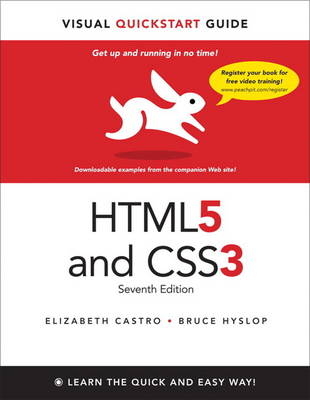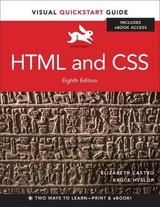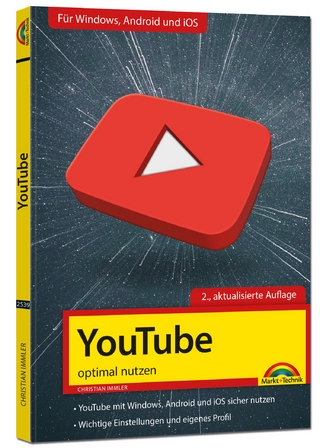
HTML5 & CSS3 Visual QuickStart Guide
Peachpit Press Publications (Verlag)
978-0-321-71961-4 (ISBN)
- Titel erscheint in neuer Auflage
- Artikel merken
Write semantic HTML, both with elements that have been around for years and ones that are new in HTML5.
Prepare images for the Web and add them to your pages.
Use CSS to style text, add background colors and images, and implement a multicolumn layout.
Build a single site for all users—whether they are using a mobile phone, tablet, laptop, desktop computer, or other Web-enabled device—based on many of the components of responsive Web design, including CSS3 media queries.
Leverage new selectors in CSS3, add Web fonts to your pages with @font-face, and use CSS3 effects such as opacity, background alpha transparency, gradients, rounded corners, drop shadows, shadows inside elements, text shadows, and multiple background images.
Improve your site’s accessibility with ARIA landmark roles and other good coding practices.
Build forms to solicit input from your visitors.
Include media in your pages with the HTML5 audio and video elements.
Test and debug your Web pages.
Secure a domain name and publish your site.
And much more! All book code samples and more are available on the companion web site.
Bruce Hyslop began developing for the Web in 1997 and focuses on interface technical architecture, development, usability, accessibility, and advocating best practices. He is the author of The HTML Pocket Guide (Peachpit Press, 2010), a thorough discussion and reference of all HTML elements (HTML5 and prior). Bruce also teaches a CSS course at UCLA Extension and occasionally speaks on matters regarding front-end development. Over the years, he has overseen front-end teams or been a developer for more than 150 projects, including those for ABC, BBC, Disney, Logitech, Microsoft, NBC Universal, Nokia, Target, Toyota, and Yahoo!, among others. Bruce is an independent developer and consultant to agencies, start-ups, and others, previously having spent a decade in the digital agency world. Formerly, he was the senior director of the Interface Engineering Group (IEG) at Schematic, where he oversaw company-wide efforts to define and implement best practices regarding HTML, CSS, JavaScript, and accessibility wherever they may be applied: the browser, desktop, mobile devices, and emerging platforms. Bruce was an early adopter of Web standards. At a previous agency in the early 2000s, he lead companies such as Baskin-Robbins and Pacific Gas & Electric into the fray of modern client-side practices while managing development between offices in Los Angeles, China, and New York.
Introduction
Chapter 1: Web Page Building Blocks
Chapter 2: Working with Web Page Files
Chapter 3: Basic HTML Structure
Chapter 4: Text
Chapter 5: Images
Chapter 6: Links
Chapter 7: CSS Building Blocks
Chapter 8: Working with Style Sheets
Chapter 9: Defining Selectors
Chapter 10: Formatting Text with Styles
Chapter 11: Layout with Styles
Chapter 12: Style Sheets for Mobile to Desktop
Chapter 13: Working with Web Fonts
Chapter 14: Enhancements with CSS3
Chapter 15: Lists
Chapter 16: Forms
Chapter 17: Video, Audio, and Other Multimedia
Chapter 18: Tables
Chapter 19: Working with Scripts
Chapter 20: Testing & Debugging Web Pages
Chapter 21: Publishing Your Pages on the Web
Index
| Erscheint lt. Verlag | 5.1.2012 |
|---|---|
| Verlagsort | Berkeley |
| Sprache | englisch |
| Maße | 175 x 229 mm |
| Gewicht | 1020 g |
| Themenwelt | Mathematik / Informatik ► Informatik ► Web / Internet |
| ISBN-10 | 0-321-71961-1 / 0321719611 |
| ISBN-13 | 978-0-321-71961-4 / 9780321719614 |
| Zustand | Neuware |
| Haben Sie eine Frage zum Produkt? |
aus dem Bereich



